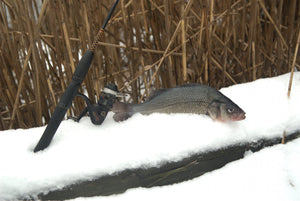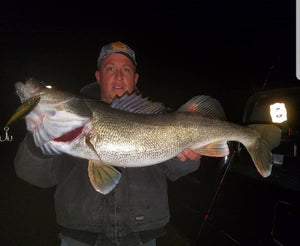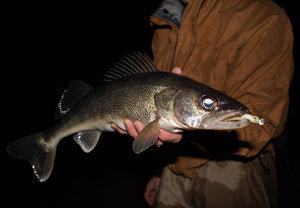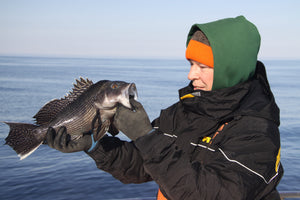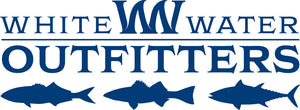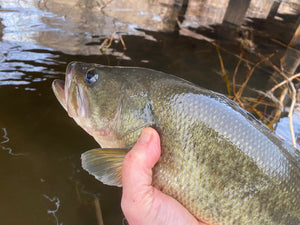Splash Now for Spring's Best Action

If you haven’t gotten out on the briny just yet this year, it’s time to kick things into high gear. Local sharpies across Long Island have been playing with stripers since early April, and May heralds the arrival of fluke, weakfish and bluefish on the inshore scene, along with masses of large porgies. Black sea bass will likely mix into many catches, too, although the sea biscuits will all have to be released until their season official opens at some point in June.
Of course, you’ll want to check the DEC website for the most recent regulations before heading out on your first trips of the season. You can do that easily and quickly at: https://www.dec.ny.gov/outdoor/7894.html. Also, make sure you’ve signed-up for New York’s free Recreational Marine Registry before splashing your boat, hitting the surf or casting from shore – it’s required for all saltwater fishing in New York State marine waters.
With the disclaimers out of the way, here’s a quick preview of the spring and early summer season for Long Island’s most popular marine species.

Fly fishing in the backwaters in a stealthy flats boat is an excellent way to connect with early season stripers. Here's WWO's own Jeff Lomonaco with a healthy early season slot-sized fish taken on fly with a classic Lefty's Deceiver, on a classic Hewes "lappy" Bayfisher.
Striped Bass
Striper season opened on April 15 in New York’s marine waters and it got off to a solid start. Raritan Bay and the waters west of Jones Inlet were hot for trollers tempting big fish with Tony Maja Bunker Spoons, MagicTail Trolling Mojos, or Mann's Textured Stretch 25+ Trolling Swimmers. By late April, the action has already spread to the back bay waters behind Reynolds Channel, up into South Oyster Bay and across western Long Island Sound, with plenty of slot-sized keepers, larger throwbacks, plus plentiful numbers of school bass.
That solid start should be the springboard for some seriously good fishing throughout May and well into June as bunker schools make their way east along the South Shore’s oceanfront. Expect inlets and harbor mouths to offer steady catches, too, especially on outgoing tides. Even though it’s still the early season, night tides hold an edge at the inlets, especially for jetty jocks and surf casters tossing large plugs and surface lures including Doc Spooks, Heddon Saltwater Super Spooks, Daiwa Mebachi Poppers and SP Minnows, Yo-Zuri Mag Darters and Crystal 3-D Minnow Magnums, along with Andrus Rip Splitter or Fat Cow bucktails tipped with Fat Cow Eel Tails.

Schoolie stripers and slot-sized keepers should be in good supply during May and early June, especially deep inside the east end bays. Walk the Dog surface lures are a sure bet to provoke some vicious strikes. Photo: OutdoorTom.com.
By mid-May, there should also be plenty of bass on the East End with the charter fleet racking up impressive scores at both Orient and Montauk points. The nice thing about spring is that you’ve got a good chance of connecting in the daytime, so it doesn’t have be a late-night affair. That also holds true for anglers live-lining around bunker schools inside Peconic Bay’s pinch points at Robins Island, Shelter Island and the Rt. 105 Bridge, and for both fly-casters and those tossing, Cheek Chub Striper Strike poppers, Super Strike Little Neck poppers, Yo-Zuri Crystal Minnows, and smaller to mid-sized soft plastics like an Al Gags Whip-It Eel, Bass Assassin Saltwater Sea Shad or Berkley Gulp! Saltwater Paddle Shad on the flats of Moriches, Shinnecock and Peconic Bay.
These same East End spots should provide some shots at big blues, too, some weighing well into the ‘teens. While the blues have been spotty over the past few years, they haven’t lacked for size. Shun the soft plastics if they are around and have a blast with surface lures and walk the dog offerings - or go to tins if nothing is showing on the surface. It’s hard to beat a 2-ounce Hopkin’s No-Equal or 1-1/2-ounce Shorty for easy unhooking, long casts and the ability to withstand repeated abuse from the yellow-eyed devils.
By the way, if you are looking to upgrade your striper, bluefish and false albacore fly-casting gear, we suggest checking out a Thomas and Thomas Exocett SS 250 (7/8-weight) rod, Hatch Iconic 7+ and Rio Outbound or Airflo Sniper That setup plus a few Deceivers and Clousers will get you going for May while the addition of some larger Flatwing patterns will set you up for June and early summer action.
Be extra careful to measure your stripers to the mark as the DEC and various town patrols have already been out in force inspecting catches at popular launch ramps and marinas.
Porgies (Scup)
Initial reports of porgy action already have the fish piling into shallow waters along Long Island’s East End. As has become the norm in recent years, this first flood of scup tends to host some outsized specimens, with a few topping 17 inches in length and 2.5 or even 3 pounds. These are the golden days of porgy fishing in terms of both quantity and quality, and nothing beats May and early June for filling your freezer with their tasty fillets.

The porgies run big during May and early June. Check out this whopper decked by Capt. John Capuano aboard the Hampton Bays open boat, Shinnecock Star. Photo: OutdoorTom.com.
The key to successful porgy fishing no matter where you target them is to keep things simple. A standard hi-low porgy rig with a pair of beak style hooks and a 2- to 6-ounce sinker, depending on current and depth, will catch all the fish you’ll ever want to clean while avoiding the aggravating tangles caused by rigs with additional hooks. Clams are the typical bait, although some anglers opt for sandworms or squid.
With scup so abundant these days, it’s easy to fill your limit catching two at a time. For this reason, we recommend having a little extra fun by jigging them in water depths of 30 feet or less. S&S Fish Heads, Spro Squidtail jigs and Spro Prime bucktails all work well for this application in a ¾- to 1-ounce size tipped with a thin piece of squid or a 3-inch Berkley Gulp! Saltwater Swimming Mullet. Match this to a light-weight quality braided line such as Daiwa J-Braid x8 for super sensitivity combined with excellent abrasion resistance.
You’ll find plenty of porgies in 8- to 30-foot depths during May and June, especially over sandy or slightly rocky bottom scattered with larger rocks, mussel beds or small pieces of broken structure. Tossing a chum pot filled with ground clam over the side should get the action going in short order.
As for where to head, porgies can be caught from both shore and boat along the entire length of Long Island Sound with areas slightly east or west of a harbor or river mouth always a solid bet. Peconic Bay is blanketed with scup through early June, too, especially on the west side of Shelter Island, around Jessup’s Neck, and west of Robins Island near Rodgers Rock, and the and the East End party or charter fleet can take you to such famous scup haunts as Cherry Harbor on the west side of Gardiners Island. The north end of the Shinnecock Canal can be especially kind to bank anglers just before and just after the locks close. You’ll also catch some weakfish, fluke, school blues and, perhaps, even a blowfish at this location, which is only two minutes from the shop. For South Shore ocean action, smaller, scattered pieces of structure and the artificial reefs not far outside of the inlets are a good bet.

Sometimes the summer flatties just want meat. Long, thin strips of squid, fluke belly for sea robin are always of interest for keeper sized fluke. Photo: OutdoorTom.com.
Fluke (Summer Flounder)
Although there was a solid run of nice fluke east and south of Montauk last year, most of Long Island found the fishing for the tasty flatties to once again be challenging last year. Still, for those who persisted, a couple of fish for dinner wasn’t out of the question. Those looking for a doormat should always make the run to Peconic Bay in May. Although there have been few fish in the double-digit class caught here over the past few years, most of the fluke you’ll find west of the Green Lawns on Shelter Island, around Jessup Neck, and over near Bug Light will be keepers with many weighing 3 to 4 pounds. Mixed in with the fluke here are likely to be a few weakfish, occasional blue, and some huge porgies. It all makes for fun mixed-bag action.
Interestingly, while the spring season plodded along and summer in this area witnessed picky action, there was a noticeable up-tick early in the fall. Shinnecock Bay saw a similar pattern, with a fair number of keepers and a pleasing amount of shorts caught in late July and early August offering some hope for the future. Keep an ear to the reports this summer and if you sense an increase in the catches act fast. – both the Shinnecock and Peconic Bay flurries lasted only about three weeks.
Classic fluke offerings include Gulp! Swimming Mullets in white, Saltwater Shrimp in new penny, and Saltwater Jigging Grubs in nuclear chicken, as will squid strips or bucktails tipped with squid, fluke belly or Fat Cow Forked Tail Jig Strips. If you want to limit your efforts to targeting doormats, fresh whole squid, large fish strips measuring 7- to 9-inches long, or a 6.5 inch Berkley Gulp! Saltwater Nemesis grub are tough to beat.

Big weakfish are huge fun for early season light tackle fishing. Jeff Lomonaco caught this late-April tiderunner on the ol' reliable Lunker City Fin-S Fish with the help of Tunny, his Nova Scotia Duck Tolling Retriever puppy!
Weakfish
While fluke fishing has been off for several years now, weakfish have been on the rebound. Last year saw the most consistent scores in what now appears to be a major comeback setting up with springtime catches sometimes reaching double-digits and some yellowtails topping 6 pounds. Why the bounce-back after so many years in the abyss? That’s tough to say. For one thing, the species tends to be cyclical with peaks of abundance followed by stretches of near disappearance. Still, you’ve got to wonder if the decrease in ravenous bluefish – which love to feast on juvenile weaks, - is having a positive influence.
No matter the case, anglers are happy to see weakfish numbers once again on the rise for the species is agreeable to a wide variety of lures, baits and presentations, beautiful to behold, feisty at the end of the line, and holds its own as a main course come dinner time.
To be sure, all you need to catch a few weakfish is a long, thin strip of squid and single-hook bottom rig. Set a 3/0 wide gap style waist high above a 2- to 4-ounce bank sinker and you’ll be in the strike zone.

It looks like the weakfish rebound will continue to build in 2023. The spring season on Peconic Bay is already off to a great start. Photo - OutdoorTom.com.
Of course, many anglers prefer to target the weaks with artificials. To that end, 5-inch pink or white Bass Assassin Shads, 5-3/4 inch Fin-S Fish or Got-Cha Curly Tail Grubs impaled on a lightweight jighead and tipped with a piece of squid will get the job done. You can drift this set-up day or night along channel edges, generally scoring best on the first two hours of outgoing water. A ¾- to 1.5-ounce diamond jig, fished naked or tipped with half a sandworm also works well if jigged lightly within two or three feet of the bottom. Keep in mind that, although there is no closed season for weakfish, you are only allowed to creel one fish per day.
- Bryce Poyer

